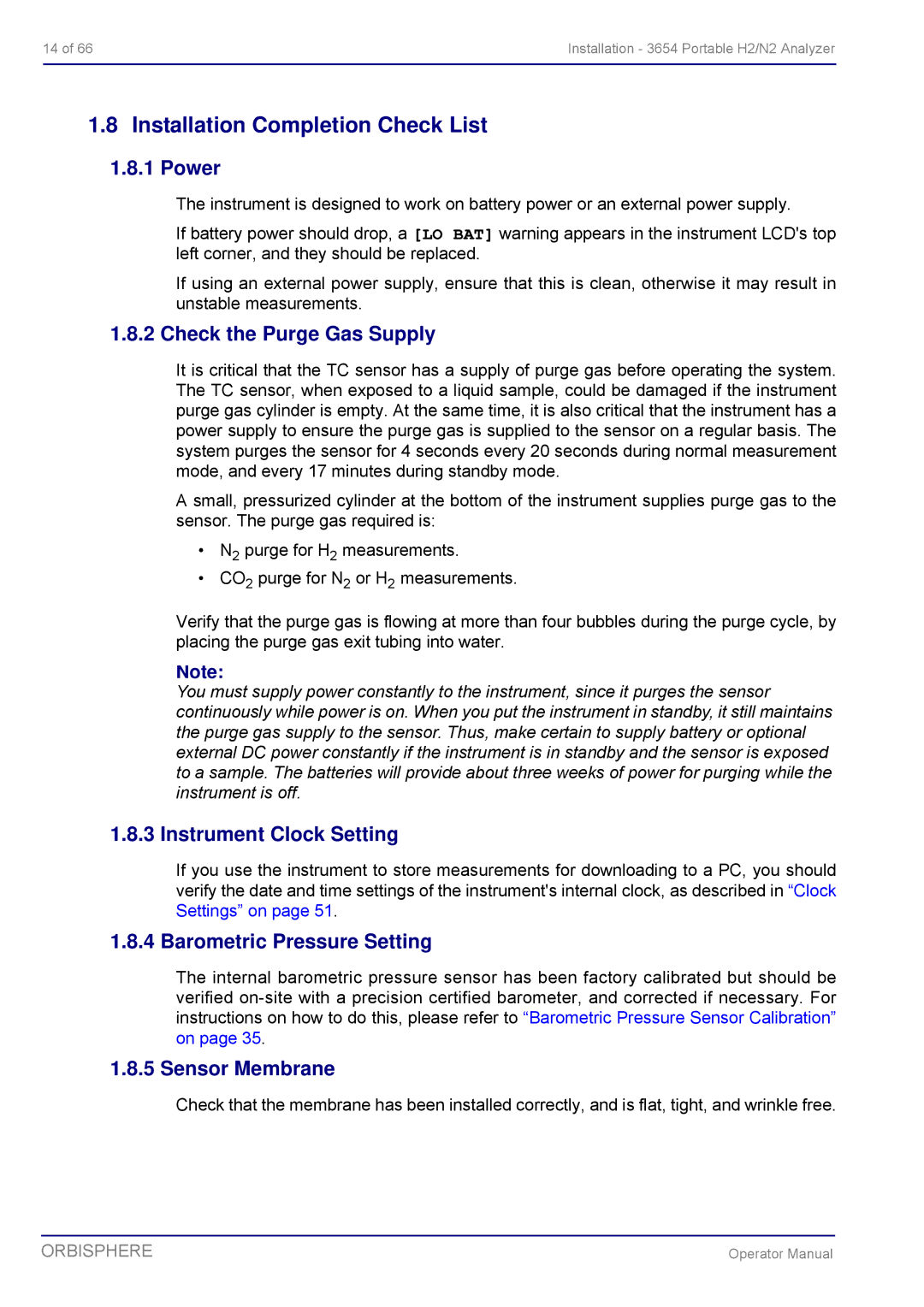14 of 66 | Installation - 3654 Portable H2/N2 Analyzer |
|
|
1.8Installation Completion Check List
1.8.1Power
The instrument is designed to work on battery power or an external power supply.
If battery power should drop, a [LO BAT] warning appears in the instrument LCD's top left corner, and they should be replaced.
If using an external power supply, ensure that this is clean, otherwise it may result in unstable measurements.
1.8.2 Check the Purge Gas Supply
It is critical that the TC sensor has a supply of purge gas before operating the system. The TC sensor, when exposed to a liquid sample, could be damaged if the instrument purge gas cylinder is empty. At the same time, it is also critical that the instrument has a power supply to ensure the purge gas is supplied to the sensor on a regular basis. The system purges the sensor for 4 seconds every 20 seconds during normal measurement mode, and every 17 minutes during standby mode.
A small, pressurized cylinder at the bottom of the instrument supplies purge gas to the sensor. The purge gas required is:
•N2 purge for H2 measurements.
•CO2 purge for N2 or H2 measurements.
Verify that the purge gas is flowing at more than four bubbles during the purge cycle, by placing the purge gas exit tubing into water.
Note:
You must supply power constantly to the instrument, since it purges the sensor continuously while power is on. When you put the instrument in standby, it still maintains the purge gas supply to the sensor. Thus, make certain to supply battery or optional external DC power constantly if the instrument is in standby and the sensor is exposed to a sample. The batteries will provide about three weeks of power for purging while the instrument is off.
1.8.3 Instrument Clock Setting
If you use the instrument to store measurements for downloading to a PC, you should verify the date and time settings of the instrument's internal clock, as described in “Clock Settings” on page 51.
1.8.4 Barometric Pressure Setting
The internal barometric pressure sensor has been factory calibrated but should be verified
1.8.5 Sensor Membrane
Check that the membrane has been installed correctly, and is flat, tight, and wrinkle free.
ORBISPHERE | Operator Manual |
